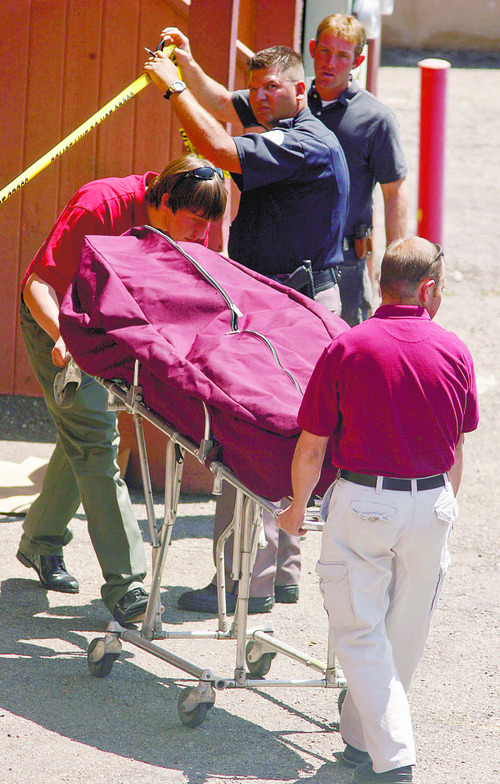This is an archived article that was published on sltrib.com in 2012, and information in the article may be outdated. It is provided only for personal research purposes and may not be reprinted.
For the first time, firearm-related deaths exceeded automobile accident deaths in Utah, as well as nine other states, in 2009.
But gun deaths were not on the rise in Utah. Rather, the number of people involved in fatal car accidents have continued a three-year decrease that began in 2009 — possibly due to public awareness campaigns.
The Violence Policy Center, which compiled the numbers based on the most recent data available from the Centers for Disease Control and Prevention, issued a Wednesday news release lamenting that the same types of public safety campaigns have not been used to reduce firearm-related deaths.
In 2009, it was reported that 260 Utahns died from gun deaths, compared to 256 killed in motor vehicle accidents, according to the news release.
But while fatal accidents in Utah have been decreasing — there were 322 in 2007, and 306 in 2008 — the number of gun deaths have not followed any trend.
There were 253 gun deaths in 2007, and 238 in 2008.
According to CDCP data, 217 of the 2009 firearm deaths — more than 80 percent — were classified as suicides.
John Malouf, a psychologist from Valley Mental Health, said guns are the most common method used in completed suicides, while pills account for the most attempted suicides.
Malouf said he feels that if guns were more controlled or less available, people might be less inclined to commit suicide.
"It's easy access to a lethal method," Malouf said, "When you think about it, if someone is suicidal and they don't have a lethal method, they usually get through the crisis OK. If they have a gun, they kill themselves, not realizing they would get through the next day."
Malouf described two basic types of people who commit suicide: those who are mentally ill and think about suicide all time, and those who just have clouded judgment. The mentally ill would likely find a way to kill themselves regardless, he said, but those who suffer from clouded judgment may not go through with the act if a gun isn't present.
Utah gun-rights advocate Clark Aposhian questioned the validity of the car-gun death comparison, but the Utah Shooting Sports Council chairman said he supports more public education to prevent accidental shooting deaths.
"If [the Violence Policy Center] wanted to join our safety campaign we'd be happy to have them," he said. Aposhian contended, however, that more regulations on guns aren't the answer.
When there is a fatal crash, "we don't call for banning automobiles," he said.
According to data from the Utah Department of Transportation, car accidents deaths continued to drop in 2010 and 2011 — 253 deaths were reported in 2010, followed by 233 in 2011.
Utah Highway Patrol Cpl. Todd Johnson credits the declines in fatal accidents to public awareness campaigns and efforts. He said the combination of efforts by law enforcement, safety advocacy groups and the National Highway Traffic Safety Administration has had a positive effect on the number of deaths on Utah's roads.
"Our goal is to reduce fatalities," Johnson said. "We are still stopping vehicles for speeding and moving violations. We stepped up efforts on DUI detection and apprehension. We are doing everything we can to put troopers in appropriate places, and making sure they are working areas where there is a high probability of traffic accidents."
Johnson said they hope to continue the trend of fewer fatalities into 2012.
"I certainly hope so," he said. "As long as we continue what we are doing. If we see a trend happening, certainly we would adjust. We certainly hope it drops again."
Johnson said there is still room for Utah drivers to improve, noting that they follow too closely on roadways and need to avoid distracted driving, especially with cell phone use.
The Violence Policy Center, which advocates for enhanced gun control, believes gun possession restrictions for people convicted of violent misdemeanors or those with a history of domestic violence would prevent firearm-related deaths. They also advocate public education program about risks involving guns.
— Tribune reporter Lindsay Whitehurst contributed to this story.
jmiller@sltrib.com Twitter: @jm_miller



